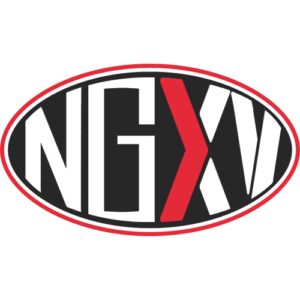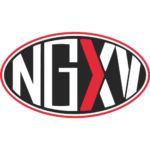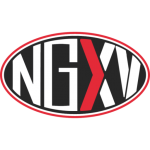Let me tell you first hand, doing school rugby rankings is never an easy task and anyone who does their own rankings will tell you that the amount of work required to formulate a calculation, collecting scores and then presenting it is not a small amount and it really has to be a passion project as the amount of abuse us rankers get is at another level.
One should never take criticism of their work personally, the fact is that if you have a product and you put it out there for the public to see there is going to be scrutiny at another level and at times one needs to reflect and consider whether their methodology is indeed working or not.
To be called out for favourtisim is always an unfair criticism, none of us attended a major known rugby school and personally being from the Eastern Cape if you look at the rankings it far from favours schools in this region.
That being said we will present readers an opportunity to take a look at two separate rankings system, a vote will be done on our Instagram page which ranking system the community feels is best reflected and this will be the system we will use moving forward.
We will give a brief explanation of each ranking system, and at the end of this will showcase what a Top 10 for each looks like. That is when your vote will count and we will continue using whatever the new system is.
CURRENT SYSTEM: ELO
The ELO rating system, is a method used to calculate the relative skill levels of teams based on the outcomes of their matches. Each team starts with a base rating, typically set at a fixed number.
We categorize schools Category A to F, this is purely based on their strength of schedule as well as factoring in their performances at Under 16 level. In terms of numbers what we do is assign as follows:
CATEGORY | TOTAL TEAMS | BASE RATING |
A | 10 | 1,490 |
B | 20 | 1.440 |
C | 20 | 1,400 |
D | 30 | 1,300 |
E | 20 | 1,100 |
F | Outside top 100 | 900 |
The strength of the ELO system is the ease in which it is implemented in addition there is software available that ensures that no duplicate scores are in place and automatically places teams in categories and assigns points based purely on the ELO of the opposition team. This rewards teams who beat teams with far higher ELO points than them and punishes teams who lose to teams with lower points.
The weakness of the ELO system is often that it rewards teams who play more fixtures which can distrort the balance of the rankings, team A may have beaten team B but if team B has played 3 or more fixtures then often times what happens is they end up with a higher rating.
ALTERNATE SYSTEM: THE NEXTGEN METHOD
This was the first rankings system we ever used and once again we worked on team categories from A-F and exactly the same as ELO the categories are as follows:
CATEGORY | TOTAL TEAMS |
A | 10 |
B | 20 |
C | 20 |
D | 30 |
E | 20 |
F | Outside top 100 |
The key difference is that there is no base rating, teams all effectively start on. A winning team is assigned x points and a losing team is assigned y points based both on their opposition category. Below is a table of how points are assigned
SCORE MAGIN | A | B | C | D | E | F |
Win: More than 20 points |
10 |
8 |
6.5 |
5.5 |
5 |
4.5 |
Win: 14-19 points |
9 |
7.5 |
6 |
5 |
4.5 |
4 |
Win: 8-13 points |
8 |
6.5 |
5.5 |
4.5 |
4 |
3.5 |
Win: 1-7 points |
7 |
5.5 |
5 |
4 |
3.5 |
3 |
Draw |
6 |
5 |
4 |
3.5 |
3 |
2 |
Loss: 1-7 points |
5 |
4.5 |
4 |
3 |
2.5 |
1.5 |
Loss: 8-13 points |
4.5 |
4 |
3.5 |
2.5 |
2 |
1 |
Loss: 14-19 points |
4 |
3.5 |
3 |
2 |
1.5 |
0.5 |
Loss: More than 20 points |
3.5 |
3 |
2.5 |
1.5 |
1 |
0.25 |
Ratings are awarded by determining the total points scored by the team divided by their fixtures. So for example if Team A has 41 points and played 10 games they would have a rating of 4.1 whereas Team B could have accrued lower total points in having 36 points but having played 6 games their rating would be 6.0 and thus be ranked higher.
There are advantages and disadvantages to all scoring systems, while ELO does not take into account margin of victory this does. Both systems take into consideration the strength of the opponent and the above we have had to spend hours on excel developing ourselves which means unlike the ELO software it is prone to error but then again when we make an error our community are the first to let us know!
Below are two tables based on the two systems presented to you, which do you think more accurately reflects the rankings this year. Again you can vote on our Instagram story or the poll at the bottom of this article.
ELO TOP 10
| RANKING | TEAM | PLAYED | WON | DRAW | LOST | POINTS |
| 1 | Paarl Gim | 5 | 5 | 0 | 0 | 1,562 |
| 2 | Paarl Boys | 7 | 6 | 0 | 1 | 1,552 |
| 3 | Paul Roos | 4 | 4 | 0 | 0 | 1,547 |
| 4 | Oakdale | 6 | 5 | 0 | 1 | 1,531 |
| 5 | Grey College | 5 | 4 | 0 | 1 | 1,525 |
| 6 | Jeppe | 8 | 6 | 0 | 2 | 1,512 |
| 7 | Affies | 6 | 4 | 0 | 2 | 1,512 |
| 8 | EG Jansen | 10 | 9 | 0 | 1 | 1,512 |
| 9 | Wynberg | 4 | 4 | 0 | 0 | 1,508 |
| 10 | KES | 6 | 4 | 0 | 2 | 1,506 |
NEXTGEN METHOD TOP 10
| RANKING | TEAM | PLAYED | WON | DRAW | LOST | POINTS | RATING |
| 1 | Paarl Gim | 5 | 5 | 0 | 0 | 42 | 8.40 |
| 2 | Paul Roos | 4 | 4 | 0 | 0 | 29.5 | 7.38 |
| 3 | Paarl Boys | 7 | 6 | 0 | 1 | 50.5 | 7.21 |
| 4 | Grey College | 5 | 4 | 0 | 1 | 35.5 | 7.10 |
| 5 | Wynberg | 4 | 4 | 0 | 0 | 27.5 | 6.88 |
| 6 | Affies | 6 | 4 | 0 | 2 | 39.5 | 6.58 |
| 7 | Jeppe | 8 | 6 | 0 | 2 | 47.5 | 5.94 |
| 8 | Northwood | 4 | 3 | 1 | 0 | 23.5 | 5.88 |
| 9 | Oakdale | 5 | 4 | 0 | 1 | 27.5 | 5.50 |
| 10 | EG Jansen | 10 | 9 | 0 | 1 | 54.5 | 5.45 |





